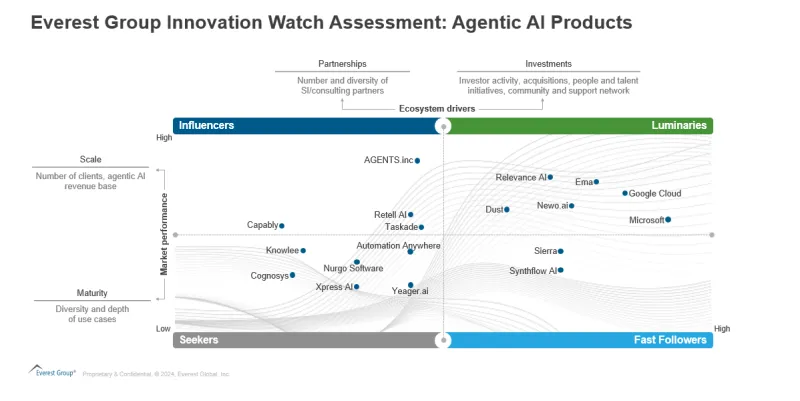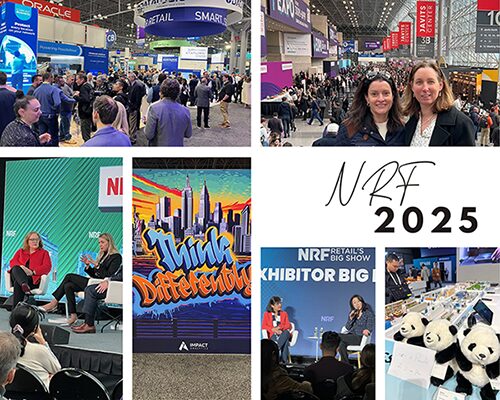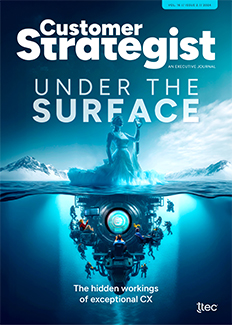Posted as part of a partnership with the European Customer Experience Organization (ECXO) and Ricardo Saltz Gulko. Read full version here: https://ecxo.org/how-to-lead-a-b2b-cx-transformation-program-and-avoid-costly-mistakes/
Introduction
A successful Customer Experience (CX) transformation program must be deeply integrated with the business strategy of an organization. Many companies fail at CX transformation because they treat it as an isolated initiative rather than embedding it into their core strategic goals. To avoid this, CX leaders must demonstrate that enhancing customer experience is not just about satisfaction but about achieving tangible business results—such as increasing revenue, improving retention, reducing costs, and strengthening competitive differentiation.
For B2B companies, the complexity of sales cycles, long-term contracts, and multiple decision-makers makes it imperative to align CX strategy with overall business objectives. This means ensuring that every investment in CX improvement is linked to measurable business outcomes, gaining leadership buy-in, and ensuring every department contributes to a unified, customer-centric vision.
Why CX Needs to Be Aligned with Business Strategy

- CX directly impacts revenue – Companies with superior CX achieve higher customer lifetime value (CLV), lower churn, and increased cross-sell and upsell opportunities.
- Customer expectations are changing – Today’s B2B customers expect seamless interactions, self-service options, and personalized service just like in B2C.
- CX can be a competitive advantage – When products and pricing are similar, superior customer experience can be the differentiator that wins new business and retains existing clients.
- Operational efficiency improves – CX improvements often streamline processes, reducing customer support costs and inefficiencies across departments.
So, how can a B2B company practically align its CX transformation with business strategy? Below is a step-by-step approach.
10 Practical Steps to Align CX Strategy with Business Strategy
Step 1: Define a CX Vision That Directly Supports Business Goals
Before implementing any CX initiatives, clearly define what customer experience means for your company. This should be a North Star vision statement that aligns with business priorities.
🔹 Example: If your company’s business strategy is to expand into new markets, your CX vision might focus on creating a seamless onboarding experience for new customers in different geographies.
🔹 Action Point: Develop a CX vision that directly ties into financial and operational goals (e.g., reducing churn by 15%, improving customer retention by 10%, increasing customer effort score (CES) by 25%).
Step 2: Secure Executive Sponsorship with a Data-Driven Business Case
To get C-suite buy-in, CX leaders must speak in business terms—showing how CX improvements translate into profitability, revenue, and cost reduction.
🔹 Example: Use hard numbers—such as calculating the revenue impact of improving customer retention by just 5%—to make the case for investment in CX.
🔹 Action Point: Present CX metrics alongside financial indicators to show the business case for improving customer experience.
Step 3: Identify and Prioritize Key Customer Journeys That Drive Business Outcomes
Not all CX improvements will have the same impact on the business. Identify which customer touchpoints are most critical to revenue generation, retention, and operational efficiency.
🔹 Example: A SaaS company may find that improving the onboarding journey reduces churn, while a manufacturing firm might prioritize faster issue resolution in after-sales support.
🔹 Action Point: Use customer journey mapping to identify the highest-impact pain points, then prioritize fixing them.
Step 4: Link CX Metrics with Business KPIs
To ensure CX is seen as a strategic priority, integrate customer experience metrics into core business dashboards.
🔹 Example: Instead of only tracking Net Promoter Score (NPS), also measure:
- Customer Lifetime Value (CLV) – Measures total revenue potential per customer.
- Sales Conversion Rates – Tracks how improved CX increases deal closures.
- Customer Effort Score (CES) – Measures how easy it is for customers to interact with your company.
- First Response & Resolution Time – Shows service effectiveness and issue resolution.
🔹 Action Point: Develop a CX scorecard that combines customer experience data with financial KPIs.
Step 5: Build Cross-Functional Alignment and Collaboration
CX is not just a function of customer service—it spans marketing, sales, product, IT, and operations. To succeed, companies need to break down silos and create cross-functional collaboration.
🔹 Example: The sales team might promise seamless onboarding, but if the implementation team is overwhelmed, customers will face delays—causing dissatisfaction.
🔹 Action Point: Establish a cross-functional CX governance team that ensures alignment across all departments.
Step 6: Align Employee Incentives with CX Goals
To drive a customer-centric mindset, CX should be embedded into employee performance evaluations and incentives.
🔹 Example: If account managers are rewarded purely for new sales but not for customer retention, they may neglect existing customers, causing churn.
🔹 Action Point: Incorporate CX performance indicators into employee compensation structures across departments.
Step 7: Use Technology to Strengthen CX Strategy Execution
Technology enhances CX by providing deeper customer insights, streamlining interactions, and enabling automation.
🔹 Example: Implementing a Customer Data Platform (CDP) can consolidate insights from CRM, support tickets, and customer feedback, creating a 360-degree customer view.
🔹 Action Point: Ensure all CX-related technology investments align with overall business transformation objectives.
Step 8: Embed CX into Corporate Strategy Reviews & Planning
CX should not be treated as a separate initiative—it must be embedded into quarterly and annual business reviews.
🔹 Example: The CEO should review CX metrics in the same way they review financials, operations, and market expansion.
🔹 Action Point: Include CX discussions in leadership meetings and track CX progress in business strategy updates.
Step 9: Continuously Monitor & Improve CX Based on Data
CX strategy is not static—it should evolve based on customer feedback, competitive benchmarks, and emerging trends.
🔹 Example: A logistics company might use real-time customer feedback to improve delivery scheduling and shipment tracking.
🔹 Action Point: Create closed-loop feedback mechanisms where customer input directly influences strategy adjustments.
Step 10: Scale CX Improvements Globally While Adapting to Local Markets
For multinational B2B organizations, CX strategies need a global framework with localized execution.
🔹 Example: A tech company expanding to Asia might need localized customer support in different languages and time zones.
🔹 Action Point: Balance standardization with flexibility, ensuring global CX principles allow regional customization.
Conclusion
For CX transformation to drive business impact, it must be aligned with core strategic objectives. By integrating CX into leadership priorities, key performance metrics, cross-functional collaboration, and technology investments, companies can ensure CX becomes a driver of sustainable growth, not just an operational improvement.
Executives should embed CX thinking into every business decision, ensuring customer experience remains a top priority alongside financial and operational goals.
In Part 3, we will explore how culture and employee engagement play a pivotal role in sustaining a CX transformation—and how companies can build a truly customer-














